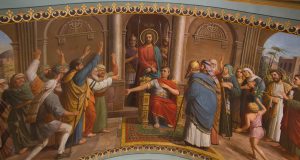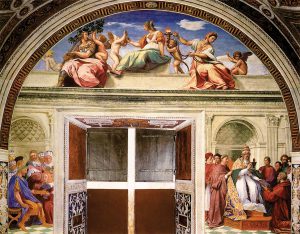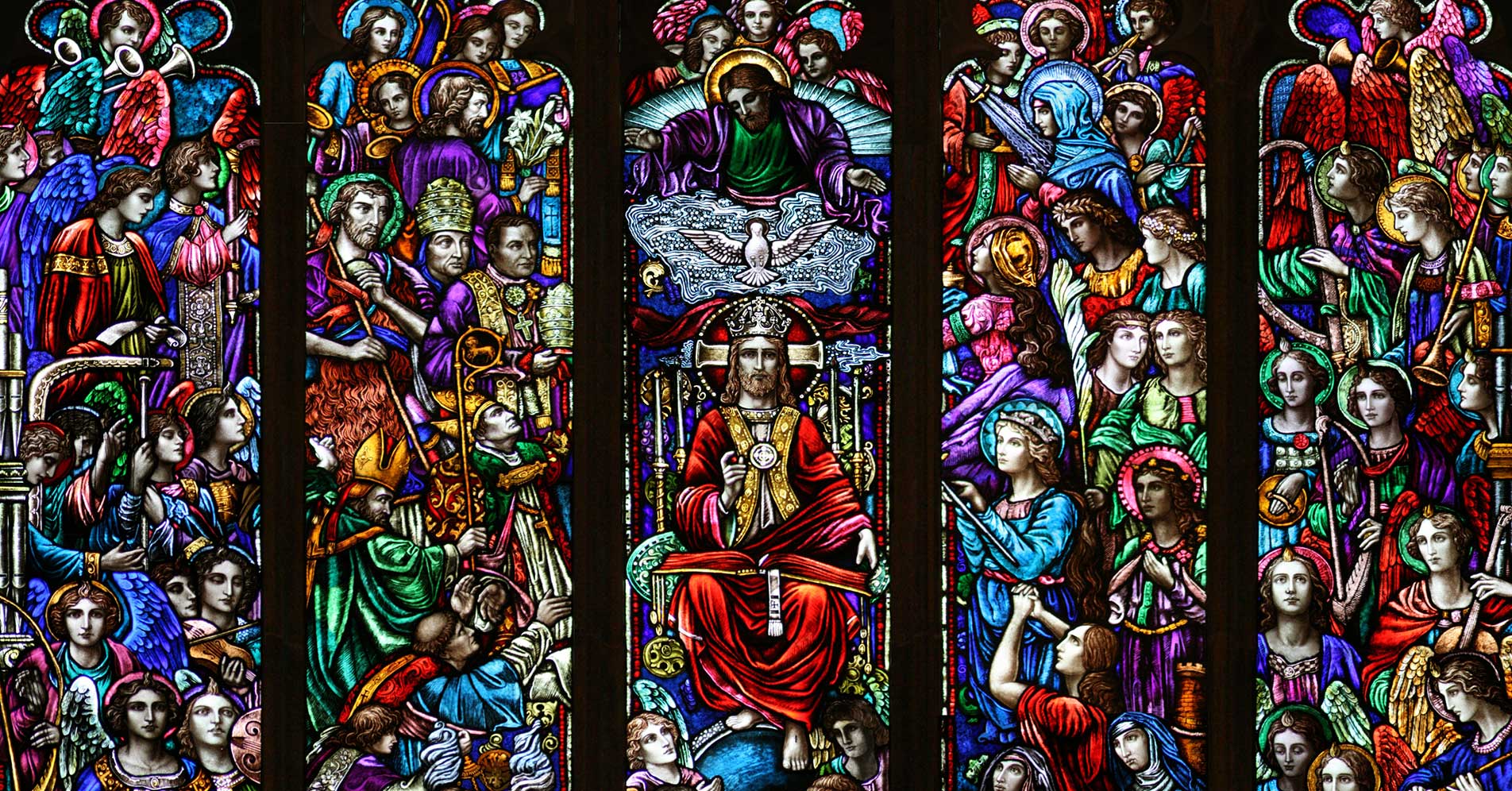
 St. Peter, St. Cecelia, St. Kateri Tekakwitha, St. Francis, St. Therese of Lisieux, St. Josephine Bakhita, St. Faustina, St. John Paul II, Blessed Stanley Rother, Nicholas Black Elk, …and you. Everyone – it is the communion of saints and we all belong.
St. Peter, St. Cecelia, St. Kateri Tekakwitha, St. Francis, St. Therese of Lisieux, St. Josephine Bakhita, St. Faustina, St. John Paul II, Blessed Stanley Rother, Nicholas Black Elk, …and you. Everyone – it is the communion of saints and we all belong.
While the Church has formally declared many men and women as saints through the ages, it also teaches that the communion of saints is “the unity in Christ of all the redeemed, those on earth and those who have died.” (CCC glossary)
The celebration of All Saints on November 1 and All Souls on November 2 provides a natural moment to consider our place in this wonderful communion.
“On November 1 we celebrate those souls in Heaven: the many, many men and women who have never been and may never be canonized but are in Heaven nonetheless. Then on November 2 we pray for those souls in purgatory: those men and women who will enter into Heaven once they have been completely perfected and healed of every fault.
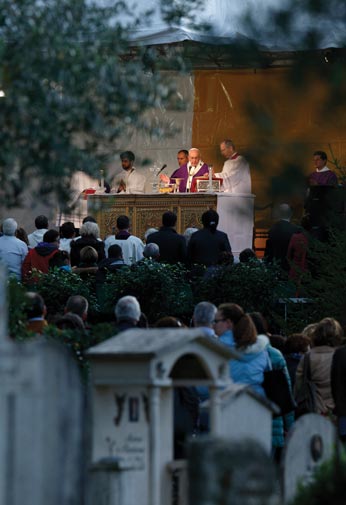
“By celebrating these feasts ‘back-to-back’ we are reminded that we are all in this together, so to speak,” said Dr. Christopher Burgwald, director of Adult Discipleship and Evangelization for the Diocese of Sioux Falls.
By baptism we become members of Christ’s church and members of the communion of saints. Most of us, even living good and holy lives, will not be formally canonized saints after we die, yet the Church celebrates all the beautiful souls created by God – many of who are no doubt saints unknown.
“Through our baptism, we have each been joined to Christ, and because of that, we have likewise been joined to one another in a deeply profound manner.
“Every baptized person who is in a state of grace is thus bound to one another in Christ Jesus, whether they are alive on earth or are in purgatory or Heaven. This is a bond that surpasses every possible natural bond, meaning that we are united with one another in a way that we can barely grasp,” he said.
“Think about people in your life who were put there as examples or reflections of God’s love for you,” said Melanie Rigney, a South Dakota native and author of several works about saints.
“For many of us, it’s parents, grandparents, other relatives, teachers, neighbors, colleagues, friends -sometimes they challenge us here on earth, but in what we later realize was needed correction and instruction,” she said.
“I would go a step further – we are all saints in the making, as are those around us. Don’t wait until they’re dead to pray with and for them.”
Rigney credits a happy set of circumstances as to how she began writing about saints but she intentionally continues to do so.
“They remain a focus of my writing because it’s great formation for me… and because I feel called to introduce people to them, so the saints can in turn introduce others to a deeper relationship with the Lord”, she said.
“I think initially, like many people, I expected them to be impossibly holy, never angry, never sad, never questioning, never lonely. And of course, nearly all of them experienced those emotions along with joy and love and laughter,” said Rigney.
“Rather than impossibly holy, I found them to be magnificently human, and validation that our lives are all extraordinary, even those that appear most ordinary to others, as we draw closer and closer to Him.”
The formal process of becoming a canonized saint in the Catholic Church has a number of steps along the way, but the Diocese of Rapid City has recently initiated the process for Nicholas Black Elk.
Deacon Marlin Leneaugh is the director of Native Ministries for the Rapid City diocese and said the time was right to start the process.
“I think folks are prepared for this to happen at this time at this place. Even though this is a diocesan event and an event for the Universal Church, it is also a huge event for Native People,” he said.
“This is a positive event for the Native Community, it is an uplifting event that shows an ordinary man, and like many in our diocese can be a model of faith for so many.”
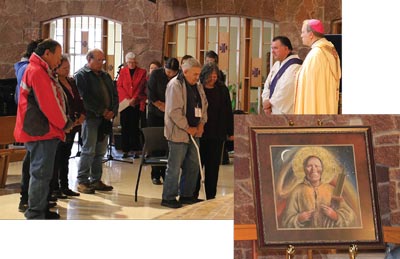
Black Elk’s story has inspired many. According to the petition presented to Bishop Robert Gruss last spring, Black Elk himself was at least partially inspired another Native American who is now a saint.
“Curious about Christianity, he began to watch and study. In 1885, he learned about Kateri Tekakwitha and signed the petition supporting the cause for her canonization. In 1904, he met a Jesuit priest who invited him to study Christianity at Holy Rosary Mission, near Pine Ridge, S.D. He did so, and on the feast of St. Nicholas, December 6, he was baptized Nicholas William. Saint Nicholas, appealed to him because he exhibited a model of Christian charity that resonated with grandpa’s role as a traditional spiritual leader and his own generosity in service to the Native People,” stated the petition, which was presented to Bishop Gruss by grandchildren of Black Elk.
“I think St. Kateri has paved the way for many Native martyrs and People of God to be recognized as saints by the Church,” said Deacon Leneaugh.
“I think Black Elk speaks to the common individual, a local person born into poverty amidst war and strife to find Jesus who was the God of the enemy and be courageous enough to spread the Gospel and yet remain a Lakota man,” he said.
Black Elk served as a catechist and traveled to reservations teaching and healing. He died in 1950.
“This cause would demonstrate to the Native communities and others that anything is possible with God. We will have someone locally that we can proudly say, ‘yeah, he’s from here, my grandfather knew him or heard him preach.’ It would instill a sense of pride throughout the Native Community,” said Deacon Leneaugh.
Black Elk being inspired by St. Kateri, one saint inspiring a potential saint, is not unique according the research done by Rigney.
“Oh, the connections are awesome. I’ve been blogging recently about this… the married couples through the centuries who have been canonized. The people who did service together… where would Teresa of Avila and John of the Cross, or Vincent de Paul and Louis de Marillac, or Francis de Sales and Jane de Chantal have been without each other?
“Edith Stein may have never become Catholic, let alone a woman religious and saint (Teresa Benedicta of the Cross) without the writings of Teresa of Avila,” Rigney said.
“The people who went on to be canonized who were inflamed by Therese of Lisieux are nearly innumerable. Anna Maria Taigi and Elisabeth Canori Mora, beatified friends in Rome, soldiered on through difficult home situations in part because of their friendship with each other.
“God puts people in our lives to invite us to learn to love Him more. It is a great gift, and it continues today. We all have people in our lives who inspire us. We are all called to holiness,” she said.
Yet we often resist this call to holiness. We hesitate to think that a Holy Day like All Saints offers anything to us personally. We might not think we can live up to someone like a canonized saint – Mother Teresa or John XXIII or other saints that we have read about.
But Burgwald insists that “we should all aspire to great holiness; one of the reasons the Church canonizes some men and women is to hold them up as models for us to emulate. Second, though, the solemnity of All Saints reminds us that each and every person in Heaven is a saint in the sense that they now see God in all His glory, and that this is something that we are all called to.”
“One of the things I find most compelling about the saints is the great variety in them: there’s not just one way to be a saint, other than to love God and neighbor deeply and heroically,” he said.
“Another aspect of the saints that fascinates me is their humility: they tended to see themselves as great sinners. But I have come to understand that because they drew so close to God, they came to see the faults and vices that they did have that much more clearly… when you’re nearer to the light, that little speck of dust is more visible than it was when you were in the dark,” Burgwald said.
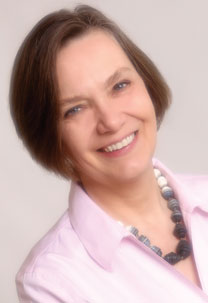
Rigney said one of the surprises in now having studied hundreds of saints is that she finds herself drawn to some that she had previously avoided.
“St. Therese of Lisieux as a child I considered to be excessively sweet,” she said.
“As an adult, and through studying her, I now realize there’s nothing excessively sweet about living the Little Way. It’s perhaps the most courageous thing we can do.
“I also had avoided St. Faustina, which likely would have pained my Polish immigrant great-grandparents. There was something a little too close to home there for me… the single-minded pursuit. I’m good at single-mindedness, but unlike Faustina, I care too much what others think of me. Growing closer to her has helped me with that,” Rigney said.
“I am struck by the wisdom many have gathered through the saints. I think of one woman in particular who prayed with Blessed Chiara Badano, asking that the woman’s husband’s cancer be cured. But he died. The woman told me that after a time, her real prayer was that his suffering be relieved, and so it was,” she said.
“My prayer is that people come to that understanding through the saints. Just because your financial situation or love life or health issue is not resolved in the way you ask in intercessory prayer does not mean the saint is not working overtime for you in intercession, or that your prayer is not heard.
“Also, it can be hard to grasp the enormity of the Trinity – after all, we’re mere mortals. But understanding a woman who gave up her life for her daughter-in-law, a man who was a great father, a woman who took in orphans or nursed soldiers – that I think fascinates people, because it means they have a shot at holiness as well,” Rigney said.
Whether we are conscious of it or not, the Church keeps saints and the idea of saints in front of us more often than just All Saints and All Souls days.
For example, each time we proclaim the Apostle’s Creed we profess our belief in the communion of saints. And at each celebration of the Mass, the saints are recalled and invoked during the Eucharistic Prayer.
The Apostle’s Creed
I believe in the Holy Spirit, the Holy Catholic Church, the communion of Saints,
the forgiveness of sins, the resurrection
of the body, and life everlasting.Amen.
While the list of saints is long and growing, Burgwald suggests focusing on one or two might be a helpful approach.
“Doing so makes sanctity seem like something attainable for me. The path of holiness is unique to each of us, based on our own gifts, personalities, etc., but by looking to saints with similar circumstances in their own lives, we are more able to see how we can love as deeply as they did,” he said.
“I like to think of the saints as our big brothers and sisters in the best sense of the term: they help us along our way and they set an example for us. Therefore I think it’s important for us to seek their intercession and to look to them as models of holiness for us to aspire to,” Burgwald said.
“Saints want to be our friends,” said Rigney. “But like Jesus, they’re not going to be pushy about it. Invite them in. Talk with them. Listen to them.”
Eucharistic Prayer III
May he make us an everlasting gift to you and enable us to share in the inheritance of your saints, with Mary, the virgin Mother of God, with blessed Joseph, her Spouse, with the apostles, the martyrs, and all your saints, on whose constant intercession we rely for help.

